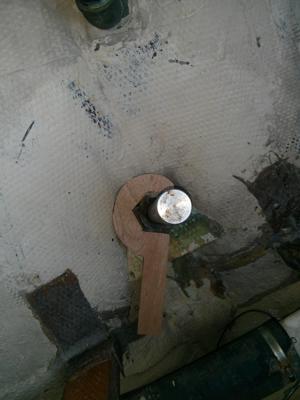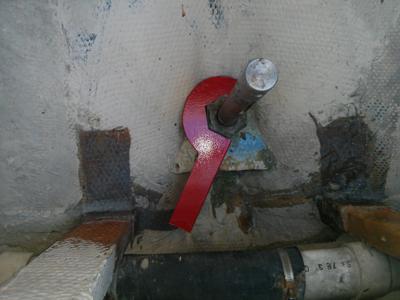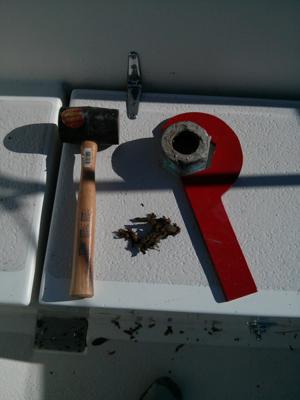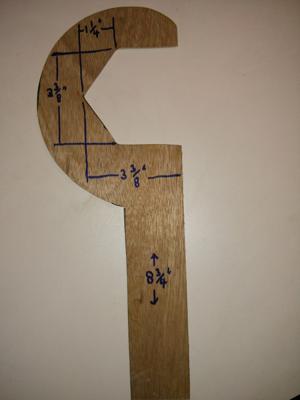I'm in the process of modifying Pilgrim's (1979 M382, Hull#115) rudder. I assumed the rudder packing needed to be replaced so dropping the rudder served to kill two birds with a single stone.
Based on deep gouges along the upper edge of the packing nut, I believe a PO used a hammer and cold chisel to tighten the packing nut.
Unable to find a suitable wrench to fit and unwilling to resort to the barbaric method of hammer and chisel, I constructed a custom packing nut wrench.
Using 1/8" laun plywood I created a template for the wrench.

template
I took the template and a scrap piece of 3/8" steel plate to a local machine shop. It cost me $10 to have the machinist use a band saw to cut out the wrench. Once back at the boat yard I used a file to clean up the rough edges of the tool. After a couple coats of spray paint my custom M382 rudder packing nut wrench was ready to go.

wrench
Due to the short wrench handle and awkward body position, gaining enough toque on the wrench bare handed proved difficult. Using a mallet to strike the handle of the wrench made quick work of removing the nut.

success
Since the nut had no scars from earlier attempts to remove it, I'm guessing the decaying, flax packing is from the original construction. I have little doubt it would have leaked.
More images and notes on Pilgrim's ongoing rudder repairs and modifications can be found in our on-line album...
https://plus.google.com/photos/105725086102693499228/albums/6070004538454949041
And on our website...
http://m382pilgrim.blogspot.com/




